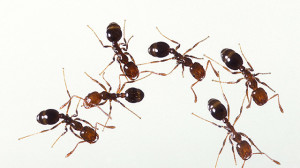Fire Ants Were Transported by Spanish Ships
According to the U.S. Department of Agriculture (USDA), invasive ants cost billions of dollars annually in control, damage repair and medical care. A recent genetic study revealed that tropical fire ants were transported by Spanish ships from Acapulco, Mexico, across the Pacific Ocean to the Philippines, where they were then transported to other parts of the world.
Researchers at the the Agricultural Research Service’s Center for Medical, Agricultural, and Veterinary Entomology (CMAVE) in Gainesville, Florida; the University of Vermont; and the University of Illinois used genetic markers to retrace the history of the tropical fire ant (Solenopsis geminate), which was a native of Central America and parts of South America. They also studied the trading patterns of Spanish vessels during the 16th century.
CMAVE entomologist DeWayne Shoemaker, whose earlier research reconstructed the invasion history of the red imported fire ant said, “We theorized that tropical fire ants were likely moved around by people and that the early trade routes most likely provided that transportation. Sure enough, when we started looking at the Spanish galley trade routes, the movement of the ants, inferred from genetics, mirrored the historic trade route.”
According to Shoemaker, early ships used soil as ballast to stabilize the ship. When the soil was removed to make room for cargo, it likely contained ant colonies.
Knowing the history and travel patterns of insects can help in in determining the best way to prevent them from invading other places.
The full story “Genetic Detective Work on Invasive Ants” was published in the December 2015 issue of AgResearch magazine.
